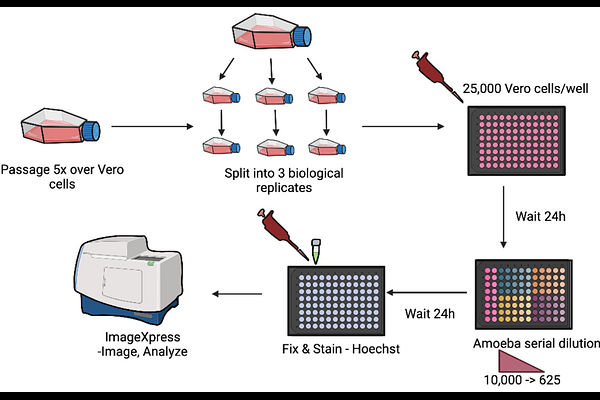Virulence of Naegleria fowleri isolates varies significantly in the mouse model of primary amoebic meningoencephalitis

Virulence of Naegleria fowleri isolates varies significantly in the mouse model of primary amoebic meningoencephalitis
Russell, A. C.; Schiff, E. B.; Dainis, J.; Jones, H.; Rice, C. A.; Kyle, D. E.
AbstractNaegleria fowleri is a small free-living amoeba that causes an acute, fatal disease called primary amoebic meningoencephalitis (PAM). One persisting question is why few people succumb to disease when so many are potentially exposed. We tested the hypothesis that N. fowleri isolates vary in virulence and in the minimum infectious dose required to induce disease by using a mouse model of PAM and intranasally inoculating dilutions of five clinical isolates of N. fowleri. Results showed significant differences in onset of severe disease and mortality rates between isolates. Remarkably, for isolate V596, 100 amoebae produced 100% mortality within 5 days. In contrast, higher numbers of amoebae were required for other isolates and mice survived for >2 weeks. Concurrently, we developed an in vitro virulence assay by comparing feeding rates between amoebae isolates seeded onto Vero cells. We observed a positive correlation between cytopathic effects in vitro and virulence in vivo.